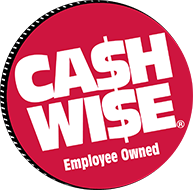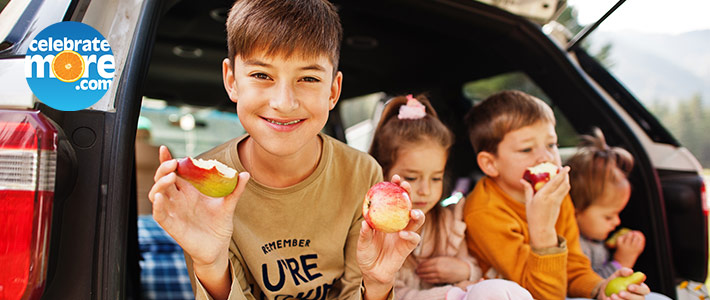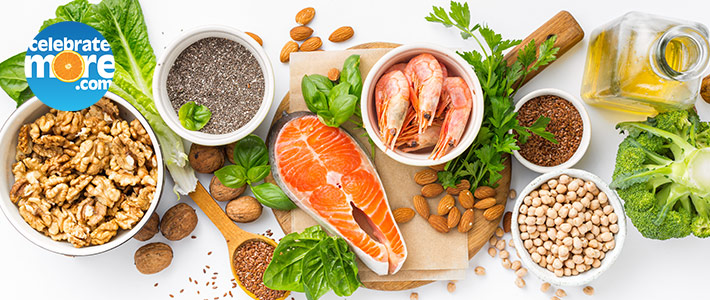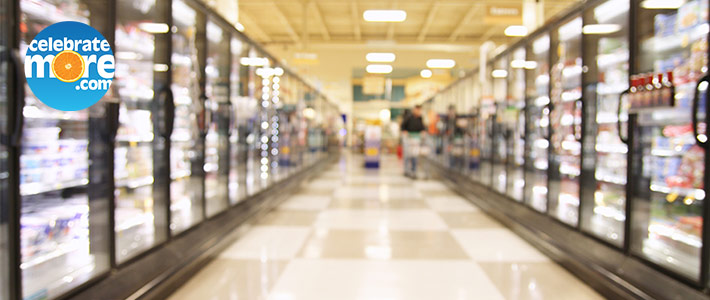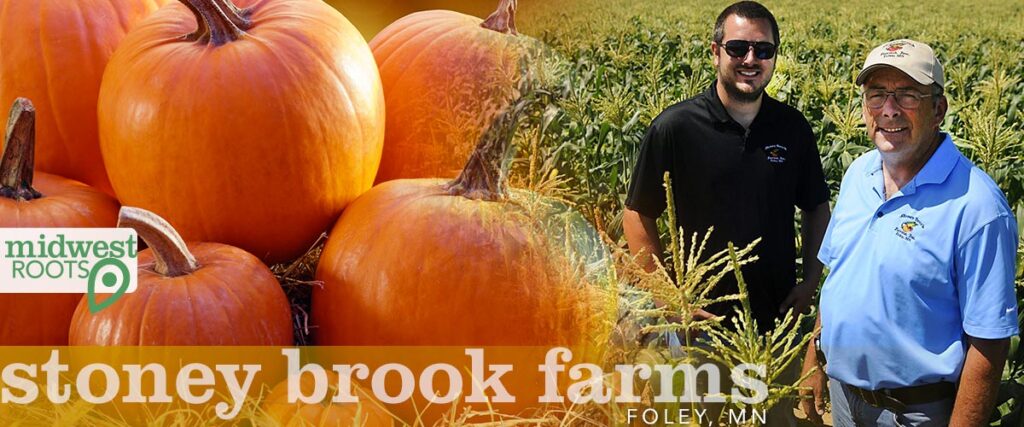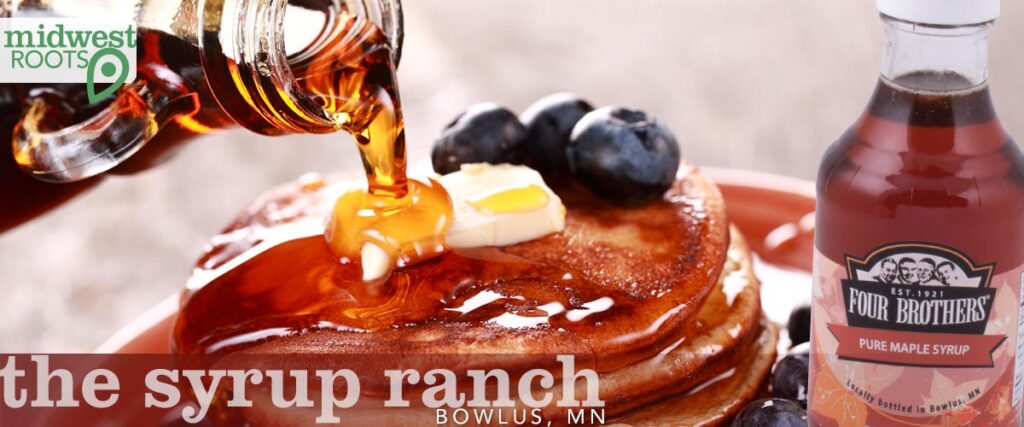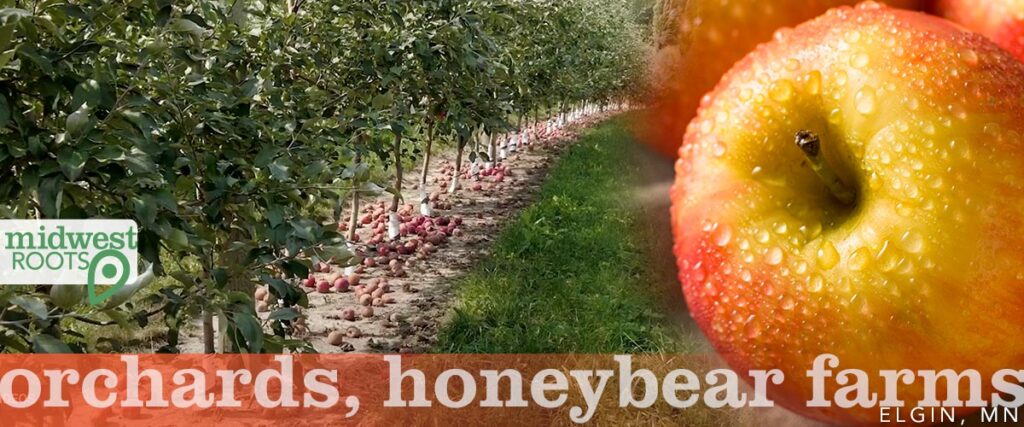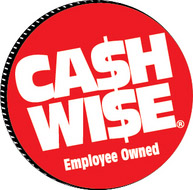Recent Articles from the Remarkable Staff throughout our
Proud Family of Stores
Proud Family of Stores
August 29, 2024Family Meals Month – Breaking Down Barriers
Grab your family, friends and some tasty food because it’s National Family Meals Month™! All over the country, we celebrate September as a month to prioritize family meals, even if that means committing to just one more family meal each week. Why? Because family meals are super important! Not only have family meals been shown to improve fruit and vegetable consumption, they have also been shown to improve family functioning¹. Additionally, in today’s fast-paced world, family meals offer a time to slow down and connect over food. However, that doesn’t mean there aren’t challenges that come along with getting everyone around the dinner table. Let’s chat about some common barriers to organizing family meals and tips for simplifying mealtimes!
Budget
Keeping family meals cost-friendly is important and doable with the use of these tips and some planning! My first tip is to utilize a variety of forms of vegetables (the same goes for fruit and grains). I love to utilize frozen varieties of vegetables because they store for longer amounts of time, meaning less food waste, which means money saved over time! Frozen vegetables have the same if not more nutrients than fresh so rest assured, they’re still a nutritious option for family mealtimes. We have an abundance of frozen vegetable options available in store and online. Look for the options with no added sodium!
Another money-saving tip I have is to choose cost-friendly protein sources. Pork is such a great option because it’s affordable, there are tons of lean cuts to choose from, and it’s packed full of nutrients! Dietitian Tip: look for the words “chop” or “loin” when shopping for lean cuts of pork!
Time
In today’s go-go-go world, family meals offer up an opportunity to slow down and spend time with our loved ones. And while most of us appreciate the extra time spent dining with our favorite people, we may not all love the extra time sometimes required to prepare for dining. The great thing is, family meals don’t have to be fancy or time-consuming. What’s important is setting aside distraction-free time to gather, communicate and bond! Check out these recipes that don’t take long to prepare AND are budget friendly!
Grilled Lemon Pepper Pork Chops
Easy Oven Baked Pork Chops
One Pan Seasoned Pork Tenderloin
Slow Cooker Pulled Pork Sandwiches
Dietitian Tip: use frozen veggies in these recipes to save money and time!
Varying Preferences
Regardless of who you dine with, whether it’s your friends or family there are bound to be differing food preferences. And that’s totally OK! In fact, I think that’s what makes mealtime fun and interesting. However, I do understand that it can make communal mealtimes a little trickier. Remember, as the meal provider, it is your responsibility to decide what is being served for the meal. Whoever is sitting down at the table then gets to decide what foods they want on their plate and how much. Don’t overthink it! Even though caregivers decide what is being served, that doesn’t mean others can’t be involved in the preparation of the meal. Getting the whole family involved can help get even the most selective eaters on board with trying a new food. In fact, kids who are involved with the preparation of their food are more likely to try and eat that food!
How ever you’re celebrating Family Meals Month™, I hope these tips come in handy! Remember, family meals don’t have to be complicated, expensive or time consuming! Simply taking some extra time to connect over food is so important and has an abundance of benefits. With that, I hope you’ll join me in adding one more family meal to your week throughout September and beyond!
Macey Brickweg, Registered Dietitian
RDN, LD
Sources cited:
1. FMI Foundation. (2022). Staying Strong with Family Meals.
Do you have questions about family meals or other nutrition related questions? Reach out to our team of Registered Dietitians!
Don’t miss out! Catch up on all the latest blogs from our Dietitian Team. [...]
Read more...
June 28, 2024A Registered Dietitian’s Guide to Road Trip Snacks
Snacks are an essential component to any good road trip. Not only do they add some fun to the trek, but they also prevent hangry passengers (because who wants that)! Having filling, feel-good snacks on hand is key. I also know the importance of convenience when snacking on the go. So, I compiled some easy ideas for nutritious snacks that will keep you fueled on your next adventure!
Grab & Go Snacks (no cooler required)
RX Bar
Kind Bar
Tuna packet
Unsalted nuts
Whole wheat crackers
Wheat Thins
Triscuits
Whole Grain Goldfish
Fruit cup in 100% juice
Bear Fruit Rolls (made from 100% fruit)
Whole grain cereal
Cheerios
Wheat Chex
Life
Shredded Wheat
Grab & Go Snacks (if you’re traveling with a cooler)
Cottage cheese cup
String cheese
Hard boiled egg
Yogurt
Make Ahead Snacks
Make your own trail mix (unsalted nuts + unsweetened dried fruit + whole wheat cereal)
Try out this recipe for better-for-you PBJ and Fruit Fold Ups
Muffins. Here’s a tasty recipe for Tri Berry Muffins
Energy bites. I love this recipe for Creamy Peanut Butter Chia Energy Bites
Overnight Oats like these Banana Bread Overnight Oats
Don’t Forget To Stay Hydrated!
Bring a water bottle. Or, if you prefer a little flavor, here are some great flavored water options!
Hint water
La Croix Sparkling Water
Bubly Sparkling Water
Waterloo Sparkling Water
I hope your summer is fueled with adventure and wholesome snacks!
Macey Brickweg, Registered Dietitian
RDN, LD
Our Registered Dietitian Team is available to answer your nutrition-related questions!
Don’t miss out! Catch up on all the latest blogs from our Dietitian Team. [...]
Read more...
April 30, 2024The Food and Mood Connection
We are finally getting to the time of the year when the days feel longer, and we are seeing more sunshine. I don’t know about you, but I definitely notice a positive change in my mood during this time of year.
Speaking of mood, May is Mental Health Awareness Month. More, now than ever, we are shining a light on the important topic of mental health. With that, I wanted to discuss the connection between diet and brain and mental health.
When it comes to the overall health of our brains and our day-to-day mood, what we eat can make a difference. Though there is no singular nutrient that is the answer to all things brain health, there are some nutrients we know to have a positive impact on the health of our brains. Today, I wanted to focus on one nutrient in particular—omega-3 fatty acids. We know that our brains need the omega-3 DHA to function optimally. In fact, the brain is largely made up of fat, with DHA being a very prevalent component.² With it being such a prominent portion of the brain, we must continue to replenish it through dietary intake of more DHA. Not only do omega-3s play a role in makeup of our brains, there is also evidence that adequate omega-3 intake may decrease the risk of depression¹ and cognitive decline.4 Knowing all of this, it only makes sense for us to bring this nutrient to the conversation of diet and brain health. With that, here are four foods you can incorporate into your diet to increase your intake of omega-3 fatty acids.
1. Seafood, specifically fatty seafood
Though seafood may be the first food to come to mind when we talk omega-3s, not all seafood is a great source of omega-3s. Use the acronym SMASH to remember the best seafood-sources of omega 3s.
S – Salmon
M – Mackerel
A – Anchovies
S – Sardines
H – Herring
2. Nuts
Walnuts are the only tree nut that is an excellent source of ALA. Pecans, pistachios, macadamia, and pine nuts, among others, also contain ALA.
Tip: sprinkle nuts on your salad, add them to oatmeal and baked goods. The options are endless!
3. Seeds
Flax and chia are both sources of the omega-3 ALA.
Tip: Add to smoothies, salads, oatmeal, baked goods and more!
4. Oils
Canola oil and soybean oil provide the omega-3 ALA
Did You Know?
ALA is the only omega-3 that is considered essential, meaning our body cannot produce it so we must obtain it from our diet. Our bodies can make DHA and EPA from ALA but it’s a very inefficient process. That’s why it’s so beneficial to ensure adequate dietary intake of all three omega-3 fatty acids!
Ready to incorporate more omega-3 rich foods into your diet? Here’s some recipe inspiration to get you started!
Cucumber Walnut Bites
Sweet & Spicy Walnuts
Pineapple Salmon Kabobs
Maple Glazed Salmon
Macey Hurrle, Registered Dietitian
RDN, LD
Do you have nutrition-related questions? Ask our team of Registered Dietitians here!
Don’t miss out! Catch up on all the latest blogs from our Dietitian Team.
Cited
1. Bachman C. Fish is Brain Food | Seafood Nutrition Partnership. Published June 13, 2023. https://www.seafoodnutrition.org/research/dietary-guidelines/fish-is-brain-food/
2. Omega 3’s and Brain Health | Always Omega 3’s. https://alwaysomega3s.com/why/brain-health.
3. Omega 3 Fatty Acids | National Institute of Health. Published February 15, 2023. https://ods.od.nih.gov/factsheets/Omega3FattyAcids-HealthProfessional/
4. Two omega-3s in fish oil may boost brain function in people with heart disease | American Heart Association. Published on November 8, 2021. https://www.heart.org/en/news/2021/11/08/two-omega-3s-in-fish-oil-may-boost-brain-function-in-people-with-heart-disease [...]
Read more...
February 29, 2024Registered Dietitian Tips for Shopping the Frozen Foods Aisles
Happy month of March! Did you know that March is National Frozen Foods Month? Your Registered Dietitian is here to chat all things frozen foods and how they can be incorporated into a balanced diet.
A common myth prevails that frozen foods are unhealthy. When in fact, there are an abundance of healthful options to be found in the frozen food aisles of grocery stores. The key is knowing what to look for to spot the better-for-you options among all the offerings. Let’s dive into some dietitian-approved tips for shopping the frozen food aisles!
Fruits and vegetables
Aren’t fresh fruits and vegetables healthier than frozen? A common question among shoppers. And the answer is NO. Fruits and vegetables picked for freezing are selected when they are at peak ripeness and are frozen almost immediately afterwards. The freezing process they undergo locks in the nutrients, making the product just as nutritious as if you were to eat it fresh. In fact, there are times when purchasing frozen can be more nutritionally optimal due to the nutrients being retained during freezing whereas fresh fruits and vegetables may lose some of those nutrients over time.
When shopping for frozen fruits and vegetables, take a look at the nutrition label. For vegetables, look for options that have no added salt, sugar, or sauces in the ingredient list. For fruits, look for unsweetened varieties.
Frozen meals
Sometimes convenience is key, and frozen entrees whip up in a flash. Plus, they can be stored for longer periods of time. When shopping for frozen meals, look for options that are loaded with vegetables and include a lean protein source. For entrees that include a grain, consider choosing varieties that include whole grains. For options that don’t have a grain, consider adding your own such as brown rice, whole wheat pasta or quinoa. Don’t forget, you can always elevate your frozen entrees with your own veggies too! Adding vegetables to frozen pizzas and frozen pasta dishes like mac n cheese is a great way to add a nutritional punch while keeping the convenience! Finally, sodium is another component to pay attention to, as many frozen entrees can have quite a bit of added sodium. Look for options that have less than 600 mg per serving.
Dietitians’ Choice
Our Dietitian’s Choice shelf tag program is in place to help you shop for the better-for-you options in our stores. In the frozen food aisles, as throughout our whole store, you can simply look for the blue shelf tag to find the options our Dietitian Team have tagged as better-for-you choices!
Happy Shopping!
Macey Hurrle, Registered Dietitian
RDN, LD
Have more questions about shopping for frozen foods or other nutrition-related questions?
Don’t miss out! Catch up on all the latest blogs from our Dietitian Team. [...]
Read more...
December 19, 2023Midwest Roots
Local is Fresher. Fresher is Better.
Check out out Midwest Roots series, featuring Stoney Brook Farms, located in Foley, MN.
Stoney Brook Farms
Foley, MN
Stoney Brook Farms is your destination for a bountiful variety of pumpkins and squash, including the beloved Jack-O-Lanterns and charming table-top minis.
Not only do the offer these delightful fall treasures, but also take pride in making a difference. A portion of their Porcelain Doll pumpkin sales goes towards supporting breast cancer research.
Stoney Brook Farms is home to Minnesota’s grandest corn maze, providing an exhilarating adventure just outside Foley, MN. Coborn’s is excited to be in collaboration with Stoney Brook Farms as part of Coborn’s Midwest Roots Initiative.
Remarkably Fresh. Incredibly Local. That’s the power of Midwest Roots.
[...]
Read more...
September 28, 2023Midwest Roots
Local is Fresher. Fresher is Better.
Check out out Midwest Roots series, featuring the Syrup Ranch, located in Bowlus, MN.
The Syrup Ranch
Bowlus, MN
Locally Tapped/Bottled Pure Maple Syrup
At the heart of our Midwest Roots lies the stories of remarkable family-run businesses, and today, we’re thrilled to promote one of our proud partners, The Syrup Ranch, from Bowlus, Minnesota!
Their journey began in 2009 when they tapped their very first tree and have embarked on a syrup-making adventure. Year by year, they evolved and grew and became dedicated to perfecting the craft of syrup-making.
In 2014, their hard work paid off when they took home awards for all three grades of syrup at the MN State Fair and even Best in Show from the Minnesota Maple Syrup Producers’ Association.
As a result of their innovation and partnership with Coborn’s, Inc., they came to create the renowned Four Brothers maple syrup brand. As their journey continued, they embraced innovation and partnered with local stores, including Coborn’s, Cashwise, and The Marketplace Foods, to create the renowned “Four Brothers” maple syrup brand.
The Syrup Ranch embodies the spirit of family, dedication, and the Midwest, and we couldn’t be prouder to be on this journey with them.
Remarkably Fresh. Incredibly Local. That’s the power of Midwest Roots.
[...]
Read more...
September 14, 2023Midwest Roots
Local is Fresher. Fresher is Better.
Check out out Midwest Roots series, featuring Orchards, Honeybear Farms, located in Elgin, MN.
Orchards, Honeybear Farms
Elgin, MN
Last fall, we took a tour of Wescott Orchards in Elgin, MN. Watch to learn more about how this amazing company teams up with other local apple growers to bring your favorite apple varieties fresh to our stores!
Remarkably Fresh. Incredibly Local. That’s the power of Midwest Roots.
[...]
Read more...
August 31, 2023Midwest Roots
Local is Fresher. Fresher is Better.
Check out out Midwest Roots series, featuring Stoney Brook Farms, located in Foley, MN.
Stoney Brook Farms
Foley, MN
Fresh local produce and the World’s Largest Corn Maze!
Established in 2005, Stoney Brook Farms is located in Foley, MN and grows nearly 700 acres in vegetables each season.
“We grow asparagus, snap peas, green beans, sweet corn, broccoli, squash and pumpkins, and more to come in the near future!”
– Brad Chmielewski, Manager.
Pumpkins? Yes please! Stoney Brook picks around 200,000 pumpkins each year. They have mini’s, pie, small, medium and large pumpkins, as well as ornamental pumpkins.
“We start our pumpkins around the 15th of May to ensure there are pumpkins starting around Labor Day. We know they’re ready when they have a nice orange color (no green!), and a firm, well-attached stem to grab on to.”
– Brad Chmielewski
In 2022, Stoney Brook Farms hosted the World’s Largest Corn Maze and they invite the public to come out the farm to see what they have going on again in 2023. Learn more information at Stoneybrookfarms.com.
Remarkably Fresh. Incredibly Local. That’s the power of Midwest Roots.
[...]
Read more...

